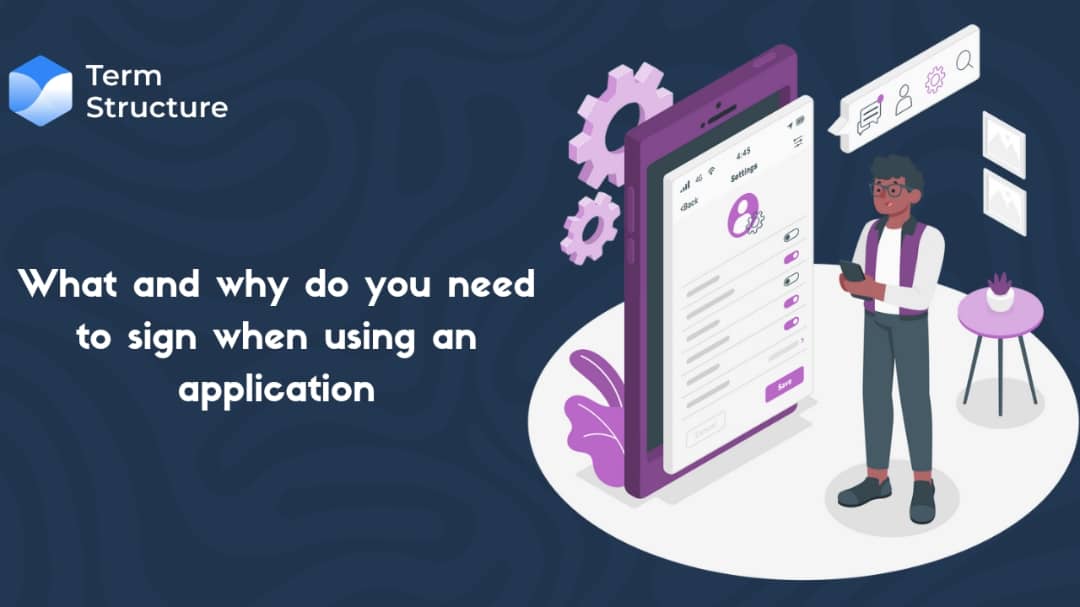What And Why Do You Need To Sign When Using An Application

What Are Decentralized Applications?
Decentralized Applications, commonly known as dApps, are software programs that run independently on a decentralized network like a blockchain. They use smart contracts to manage transactions and operations automatically.
Unlike traditional applications that rely on centralized servers, dApps distribute data and control among network participants to enhance security, transparency, and autonomy. These applications are versatile and can be used across various sectors, such as finance, asset tracking, social media, and gaming. They offer features like decentralized finance (DeFi), peer-to-peer transactions, and verifiable ownership of digital assets.
What Does It Mean To ”Sign” In Blockchain?
Signing in a blockchain application involves using cryptographic signatures to authenticate and authorize users within the decentralized network. This process ensures the security and integrity of transactions and interactions on the blockchain. By signing in, users prove ownership of their digital assets or identity without relying on traditional centralized authentication methods like usernames and passwords. Blockchain applications leverage private and public key pairs to create digital signatures, providing a secure and tamper-proof way to verify the identity of users and authorize their actions on the network.
Some Digital Signature Algorithms:
RSA-based signature schemes: RSA is an asymmetric cryptographic algorithm. It can be used for performing a digital signature over a message. RSA signature is quite reliable, strong, and secure.
Rabin signature algorithm: Rabin signature algorithm is one of the first digital signature schemes that were proposed. Hashing was introduced as an essential step in the signing process. It has relatively less use or standardization outside IEEE P1363.
ECDSA: Elliptic Curve Digital Signature Algorithm (ECDSA) is bitcoin’s current digital signature scheme. This scheme uses shorter keys and has few computational requirements than the RSA system. This scheme uses elliptic curves instead of finite fields and relies on the discrete log problem instead of the difficulty of factoring primes for security.
ElGamal signature scheme: ElGamal digital signature scheme is based on the algebraic properties of modular exponentiation together with the difficulty of computing discrete logarithms. This is rarely used in practice. Its variant developed at NSA and also known as Digital Signature Algorithm is much more widely used.
Schnorr signature: ECDSA lacks one important property i.e. there is no efficient way to compress and verify signatures together. Schnorr signature schemes are provably secure with standard cryptographic assumptions, non-malleable, and provide linearity.
BLS signature: BLS digital signature scheme relies on pairings-based cryptography. BLS signatures enable key and signature aggregation but they are deterministic, allow signature aggregation across an entire block, and are approximately 50% smaller.
Why Sign A Transaction?
Signing into a decentralized application (dApp) using your wallet is a crucial step for securing your transactions and ensuring that you are the rightful owner of the wallet.
Here are a couple of reasons why you need to sign a dApp:
Authentication: Signing a message with your private key is a way to prove ownership of your wallet without revealing the private key itself. This is a more secure way of authentication compared to traditional methods like usernames and passwords, which can be easily compromised.
Authorization: When you sign a transaction in a dApp, you authorize the transaction to be executed on the blockchain. This is important because it ensures that only authorized transactions are processed, preventing unauthorized access and potential fraud.
Security: Signing a message with your private key creates a digital signature that is unique to your wallet. This digital signature can be used to verify the authenticity of the message and ensure that it has not been tampered with. This adds an extra layer of security to your transactions, protecting you from potential attacks.
Integrity: By signing a message, you ensure that the data you are sending has not been altered in any way. This is important because it ensures that the data you are sending is accurate and reliable, preventing potential disputes and misunderstandings.
Decentralization: Signing a message with your private key is a decentralized way of authenticating and authorizing transactions. This is important because it eliminates the need for a centralized authority to verify your identity, ensuring that the dApp remains truly decentralized and autonomous
How To Sign A Transaction (Using Term Structure As An Example)
For Wallet Authentication: To have access to Term Structure dApp.
Step 1: Connect your wallet by authenticating it. Term structure requires you to authenticate your wallet.
Step 2: Click on “sign” to complete the authentication.
Recall that one of the reasons we sign a transaction is to prove ownership. This is what happened here. By doing the above we just proved that we owed the wallet above.
For Authorization: To give access for your funds to be used on a decentralized application.
When you execute a transaction on a Dapp like Uniswap or Term Structure, you must authorize the platform to use a specific amount of your tokens or assets on your behalf.
Below, I am trying to make a deposit and I am required to approve the amount of tokens I want to deposit. In this case, I have up to 1,000,000USDT in my wallet, but I only want to approve 100,000USDT to be used on Term Structure.
For Permission: For instance, on Term Structure, I want to lend in the primary markets. I can't simply place an order and expect it to be executed instantly. Instead, I need to sign the transaction, as shown below.
To place an order in secondary markets, I will also have to sign the transaction as you can see below.
CONCLUSION
In conclusion, decentralized applications and blockchain technology represent a move toward systems that are secure, transparent, and self-operating. By adopting decentralized principles, cryptographic signatures, and secure transactions, users can confidently interact with dApps, knowing their actions are secure, verified, and autonomous. Term Structure like every other decentralized application, requires you to authorize, sign and authenticate your wallet before you can fully access the platform. These ensures security, and proofs that the wallet belongs to you.

